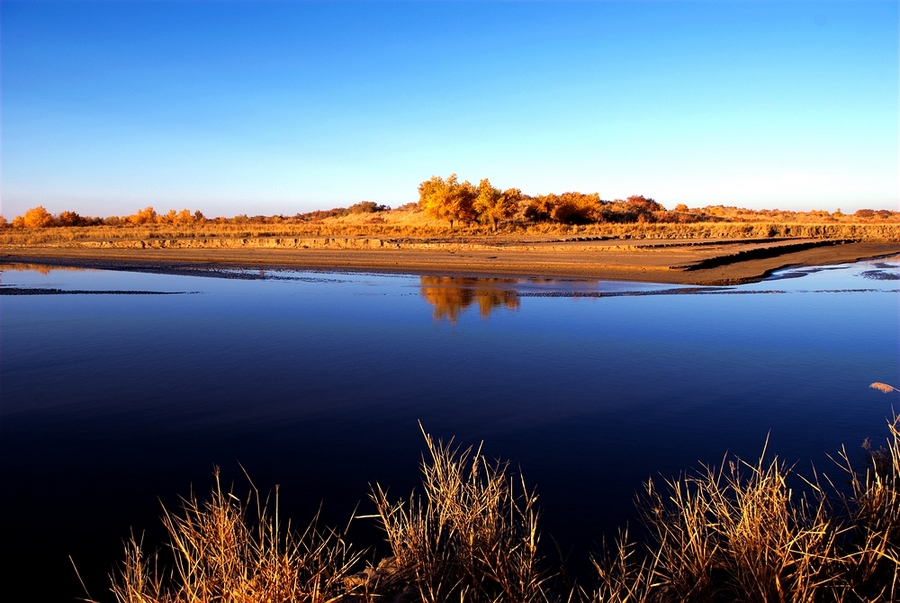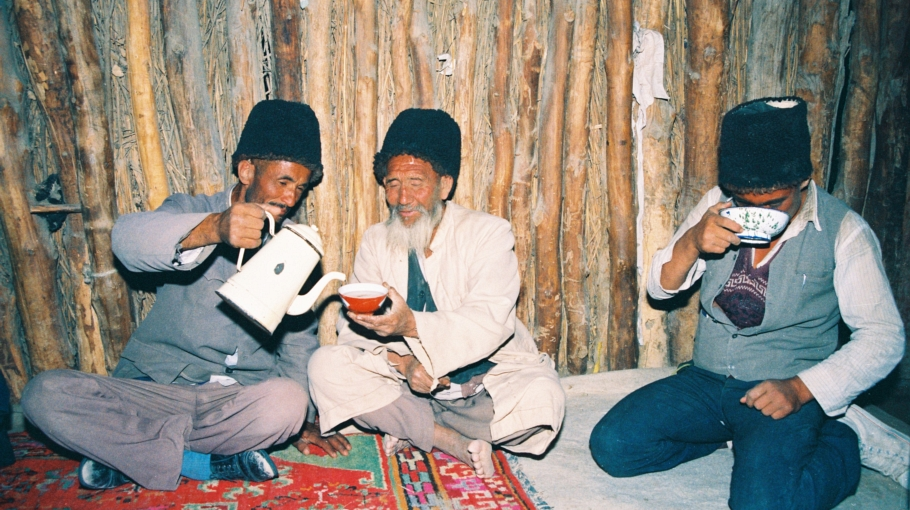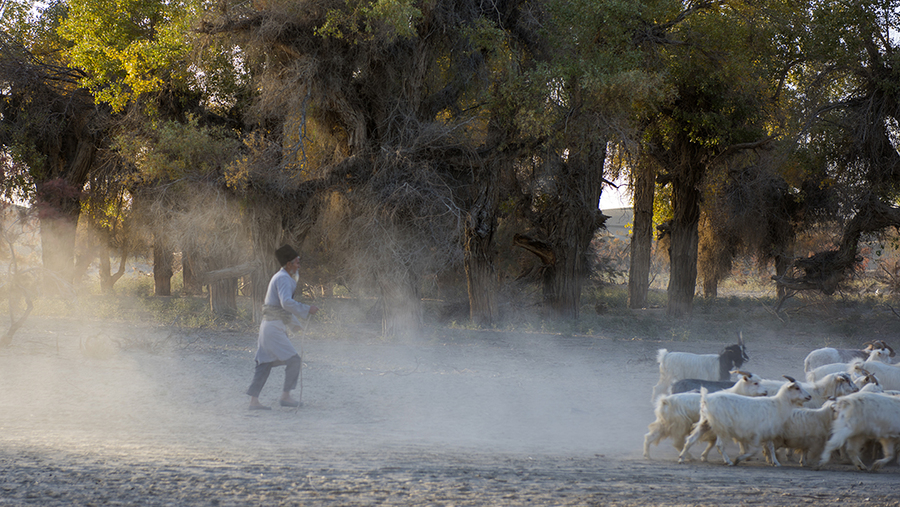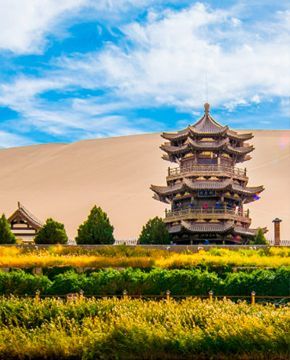
Walking along the Keriya River from Yutian County, one can reaches an oasis called Daheyan. Its inhabitants are Uygurs but they were given the name Keriyans. In January 1896 Sweden explorer, Sven Hedin, strode into the Taklamakhan Desert along the Keriyan River area. He found out that it was not only a happy home to groups of wild camels and boars but also a home to a tribe. It was Keriyans.
The Keriyans live on farming as well as raising domestic animals, Nan and tea are their staple snacks. It is very difficult for them to have vegetables and fruits. Their weddings are exhilarating and exciting. The young can choose their lovers within the desert villages and tribes.

Some scholars believe that Keriyans are descendants of ancient Guge. Tibetans. After the collapse of ancient Guge Kingdom, some people climbed through the Kunlun Mountains and lived in Darya area since then. They had been isolated from the outside world, hunting and breeding stock until now. However, some suggest that they are offspring of Uygurs because they share the same appearance, costume, language, written script, religion, and custom with the Uygurs in Yutian. Until today, it is still a myth about where the Keriyans were from.
In 1959, the government found them and set up the “Daheyan” village but they disappeared again in the “Cultural Revolution”. In 1989, the government established a school, trained the medical staff and veterinarians, and supplied then with electricity, water, post office service and coop for finance. Gradually, the Keriyans in Daheyan step into the modern civilization.




